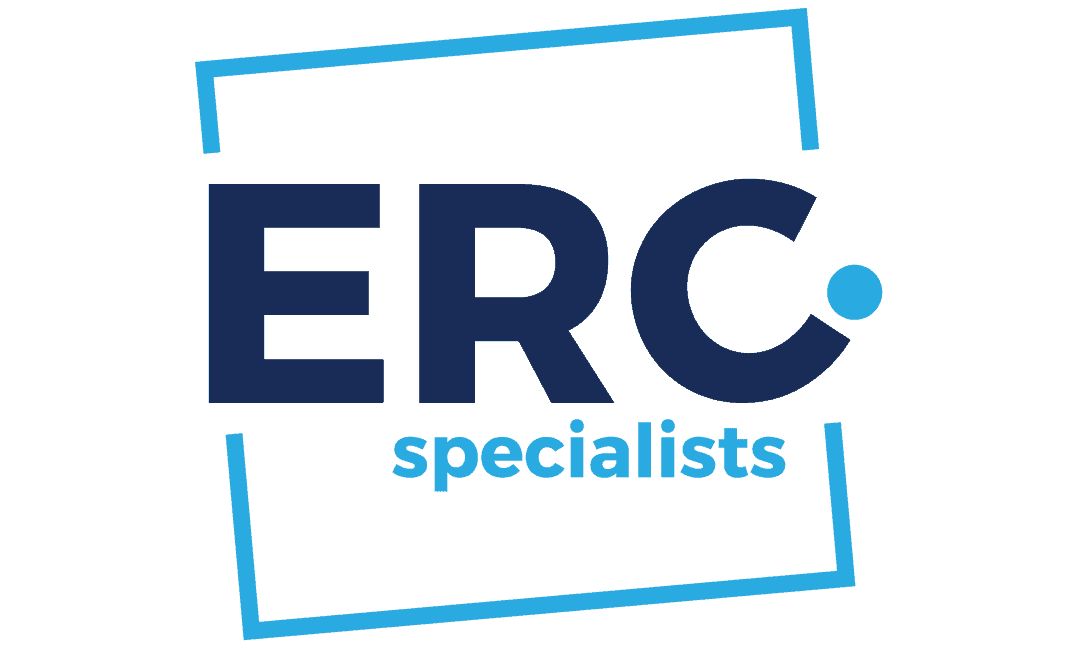
Level Up Your Business Today
Join the thousands of people like you already growing their businesses and knowledge with our team of experts. We deliver timely updates, interesting insights, and exclusive promos to your inbox.
Join For FreeWhat is the Employee Retention Tax Credit and who qualifies? Read our guide to find out everything you need to know about this money-saving tax credit.

On 1/10/24, IRS Commissioner Daniel Werfel announced that the IRS is continuing to improve and automate ERC review procedures and will begin processing new ERC claims in the spring following the moratorium implemented in September. Existing claims are still being processed and eligible businesses can still submit an ERC claim through reputable ERC companies to be processed when the moratorium ends. Visit our full breakdown of the ERC pause for the latest information.
While many COVID-19 relief programs have ended, there are still ways for small business owners to put some money back into their pockets. One way is by claiming the employee retention credit.
The Employee Retention Tax Credit (ERTC) was available during the pandemic, but eligible employers can still cash in on this money-saving tax credit. In this post, we’re going to break down the employee retention credit, including what it is, who qualifies, and how to claim it.
Or, find one these trusted best ERC companies to help understand and file the ERC credit on your behalf.
Table of Contents
The Employee Retention Credit is a refundable tax credit for employers that was put into law through the CARES Act. Further legislation made the credit accessible to more employers. This credit is used to offset employment taxes paid by an employer to offer relief due to the coronavirus pandemic.
The Employee Retention Credit served as an incentive for employers to keep employees on staff. This credit was created to help offset employer costs while preserving jobs.
ERC stands for the “employee retention credit” which is a tax credit available for business owners impacted by COVID-19. ERC can sometimes be referred to as ERTC which stands for “employee retention tax credit.”
The employee retention tax credit was initially claimed on quarterly tax returns and provided immediate relief to employers by reducing employment tax deposits. If the amount of the credit exceeded the amount of employment tax deposits due, employers could request an advance payment from the IRS.
Qualified employers that missed out on claiming the ERC credit can now file amended quarterly returns to receive the credit in the form of a refund.
In order to claim the Employee Retention Tax Credit, there are a few qualifications that businesses must meet, including paying qualifying wages to at least one employee. A business or tax-exempt organization must also meet one of the following conditions:
Many small businesses will qualify under the second requirement, but what does “a significant decline” really mean? For 2020, gross receipts for the quarter must be less than 50% of the gross receipts from the same calendar quarter in 2019. For 2021, gross receipts must show a decline of more than 20% of a comparable quarter in 2019.
There are also rules surrounding employees that are claimed under the ERC credit. These rules are:
Learn more about how to qualify for the employee retention tax credit.
Many small business owners that meet the requirements listed above will qualify for the ERC tax credit. However, there are some businesses that won’t qualify, including:
Employers can claim 50% of eligible wages up to $10,000 paid per employee per quarter from March 13, 2020, through December 31, 2020. In other words, a maximum of $5,000 per eligible employee could be claimed in 2020.
The rules changed for 2021. Under the new rules, employers can claim up to 70% of the first $10,000 of qualified wages paid from January 1, 2021, through September 30, 2021. The maximum limit is $7,000 per quarter per employee, for a maximum amount of $21,000 per employee per year.
Some employers may also qualify for ERC for wages paid from October 1, 2021, through December 31, 2021. To qualify, an employer must be classified as a recovery startup business. A recovery startup business must meet the following requirements:
Learn more about how to calculate your refund from the employee retention tax credit.
Qualified wages for the ERC are wages that are subject to FICA taxes. In addition to wages and compensation, certain healthcare expenses also may count as qualified wages when calculating the employee retention credit.
There are certain situations where wages may not be counted toward the ERC. This includes:
If you claim the ERTC, how will it impact your federal tax return? Per the IRS:
An employer receiving a tax credit for qualified wages, including allocable qualified health plan expenses, does not include the credit in gross income for federal income tax purposes. Neither the portion of the credit that reduces the employer’s applicable employment taxes, nor the refundable portion of the credit, is included in the employer’s gross income.
In short, the ERC is not included in gross income; therefore, the credit is not taxable. However, there are some expense disallowance rules that may impact your tax return after receiving the ERC. While ERC isn’t added to your gross income, it does affect the deduction you take for wages and salaries. This reduced deduction will increase your taxable income.
You can speak to your accountant or a tax professional to learn more about how the ERC will affect your taxes.
Originally, small business owners could claim the ERC on their quarterly tax returns using Form 941. However, many small business owners did not take advantage of this money-saving credit.
The good news is that small business owners can apply for the ERC by filling out Form 941-X to amend their tax returns. Eligible small business owners will receive the tax refund in the form of a refund check from the IRS.
We recommend that you look into how to apply for the employee retention tax credit ahead of time to increase your chances of a successful application.
If you think you qualify for the employee retention tax credit but don’t want to tackle the hard work yourself, you can hire a third-party service to help you through the process. There are several reputable companies for ERC funding, including Omega Accounting Solutions, Lendio, Paychex, and Innovation Refunds.
For a fee, these third-party providers will complete the necessary steps to claim the ERC on your taxes, including completing your amended tax returns and submitting them to the IRS. ERC fees vary but are typically contingent and are a percentage of your ERC refund amount.
We’ve extensively researched the best ERC services, but if you are still worried about ERC scams or fraud, learn how to avoid ERC scams and choose the most reputable ERC service company for your business.
If you missed out on claiming the employee retention credit when filing your quarterly tax return, you can claim the credit retroactively. To do this, you must fill out a separate Form 941-X for each quarter for which you qualify for the credit. Once completed, submit the forms to the IRS by mail to receive a refund check.
Learn more about what steps you need to take to claim the ERC credit on your taxes.
The deadline for filing your amended returns to receive the ERC for filing year 2020 is April 15, 2024. The deadline for filing your amended returns to receive the ERC for filing year 2021 is April 15, 2025.
Receiving an ERC refund from the IRS can take quite a bit of time. While it may be possible to receive your ERC refund in as little as four months, many small business owners are reporting that it has taken anywhere from 10 to 12 months to receive their refund checks in the mail.
Remember, once you receive the funds, you’ll need to record the ERC in your financial statements and accounting software.
Once you’ve submitted your Form 941-X to claim your tax credit, you can contact the IRS by phone to determine the status of your refund.
While you can’t speed up the ERC refund process itself, you can get an advance of your refund with an ERC loan. Check out the best ERC loans to find a lender that can get you your ERC funds in weeks, not months.
Those seeking more assistance with this complex process should know that further ERC support is available. If filing an amended tax return seems too overwhelming, or you’re just unsure if your business qualifies, don’t hesitate to reach out to an ERC tax credit company or your accountant to help you through the process.
Although the employee retention tax credit could only be claimed for 2020 and 2021, small businesses that didn’t take advantage of this tax credit can still file to receive a refund. If you qualify, you could receive extra money to put back into your business (or your pocket). It’s certainly worth taking the time to determine if you qualify for the employee retention credit and to complete and submit the required forms to receive your refund.
Get in touch with a real human being on the Merchant Maverick team! Send us your questions, comments, reviews, or other feedback. We read every message and will respond if you'd like us to.
Reach OutGet in touch with a real human being on the Merchant Maverick team! Send us your questions, comments, reviews, or other feedback. We read every message and will respond if you'd like us to.
Reach Out
Let us know how well the content on this page solved your problem today. All feedback, positive or negative, helps us to improve the way we help small businesses.
Give Feedback
Want to help shape the future of the Merchant Maverick website? Join our testing and survey community!
By providing feedback on how we can improve, you can earn gift cards and get early access to new features.
 Experience competitive rates, excellent customer support, and a fast & easy claim process. Request a free analysis today.
Get Started
Experience competitive rates, excellent customer support, and a fast & easy claim process. Request a free analysis today.
Get Started
Help us to improve by providing some feedback on your experience today.
The vendors that appear on this list were chosen by subject matter experts on the basis of product quality, wide usage and availability, and positive reputation.
Merchant Maverick’s ratings are editorial in nature, and are not aggregated from user reviews. Each staff reviewer at Merchant Maverick is a subject matter expert with experience researching, testing, and evaluating small business software and services. The rating of this company or service is based on the author’s expert opinion and analysis of the product, and assessed and seconded by another subject matter expert on staff before publication. Merchant Maverick’s ratings are not influenced by affiliate partnerships.
Our unbiased reviews and content are supported in part by affiliate partnerships, and we adhere to strict guidelines to preserve editorial integrity. The editorial content on this page is not provided by any of the companies mentioned and has not been reviewed, approved or otherwise endorsed by any of these entities. Opinions expressed here are author’s alone.
 Experience competitive rates, excellent customer support, and a fast & easy claim process. Request a free analysis today.
Get Started
Experience competitive rates, excellent customer support, and a fast & easy claim process. Request a free analysis today.
Get Started
We Recommend Lendio 🏆
Lendio is one of our top picks for Business Financing!

Lendio is a free-to-use marketplace that allows you to compare lenders side-by-side.
Get started with no commitment today.